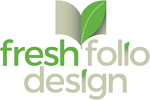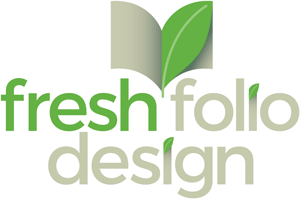 Alright, this is not really a huge revelation, but the lion’s share of talent in our design company is not held by me. I’ll pause for a moment while you pick yourself off the ground and recover your composure (laughter is not only good exercise, but it’s good for your mental health… Okay, stop… enough already).
Alright, this is not really a huge revelation, but the lion’s share of talent in our design company is not held by me. I’ll pause for a moment while you pick yourself off the ground and recover your composure (laughter is not only good exercise, but it’s good for your mental health… Okay, stop… enough already).
Just over 17 years ago, I joined Rebecca as part of 32 Design (our original company) having little-to-no experience in design, with the exception of the bit I gleaned off her by some kind of weird osmosis-type process. My level of input was pretty much limited to, “Why are you doing it that way?”
My background is in Communications and Theatre, so while there was some measure of artistic inclination, it certainly wasn’t in graphic design. However, what I had on my side was an interest in learning, technology, and not wanting to feel left out.
We determined that the perspective of a “non-designer” could be relevant to share in the blog since a portion of our audience are non-designers working with designers. So I will assume a “Jane Goodall” type role and share my observations of working up close with a designer. (Always keep them well-fed and make no sudden movements)
My hope is to bring value around what I’ve learned in working with a designer and maybe illuminate why they do what they do. Although, truth be told, there are some things I may never understand… seriously, why all the vitriol about comic sans?
Let’s dive into the first of what may be an ongoing feature on this blog — Observations About Design (or what Ms. Goodall may call, “An Untrained Monkey Tries to Talk about Graphic Design”).
Concept: What A Reality
I’d have to say the most overwhelming element of the design process has to be the concept phase. Looking at a blank page at the beginning of a project after discussing the overview and objectives for a project can seem daunting.
Now, in full disclosure my role in the actual design portion of creating concepts is minimal. However, over time what I’ve found is having a background in Communications can be helpful. The gathering of information, priorities and goals is a key piece in the preparation for concepting. What I’ve found is that focusing in on the key elements of a project is not unlike writing a lede for a press release or a news article. Distilling down the information to determine the most important focal points is crucial.
One of the things the discovery process always reminds me of is Patrick Lencioni’s book, “Getting Naked”. In the book, Lencioni consistently refers to the necessity of asking stupid questions. His observation is that in an effort to prevent looking unknowledgeable, ignorant, or just plain stupid, too many people resort to saying nothing. Unfortunately by doing that, there is a much higher potential for misunderstanding and designing something that ends up completely missing the mark. His essential point is, “dare to look stupid.”
Look at the Birdie
The other thing that keeps coming up for me, and it’s something Rebecca has referenced in previous posts, always be clear on your hierarchy, where you want someone focused.
That’s always reminded me of a directing class that I had in college. The professor was discussing the importance of focus in terms of blocking a scene; to know what the most important event is and thinking in terms of where people are going to focus.
The particular scene that we were looking at was the play-within-a-play in “Hamlet”. Hamlet is setting up his uncle Claudius (who killed his father) by revealing his dastardly deed in play form and confronting him with it. In blocking the scene, you want to make absolutely certain that Claudius is the focus at that point of the play-within-the-play to get a clear view of his reaction. Anything that detracts from, or interferes with, that moment is detrimental.
Design is similar in a number of ways (not the part with all the death and deceit, but the focus on… focus). It’s very important that you have your audience looking where you want them to look. It took me a little while to understand what Rebecca was doing at times, but when she explained how she was using color, size and contrast to direct a person’s eye when looking at a designed piece, that made sense to me.
When you are having a printed piece designed by a graphic designer, make sure that you are aware of your priorities and what the most important pieces of information are. It will ultimately help your designer to have that information upfront.
Instructions Always Included
Okay, true confessions — I’m one of those people who read instruction manuals. Not ALL instruction manuals, but the ones that come with anything I buy. The truth is that I don’t want to miss out on a feature or warning. I’m sure deep down, I’m afraid that I’m going to wreck something by misusing it.
So, what does this have to do with design?
Realistically, design will always be tied to the use of software and a computer. (Until the robot uprising, but I guess by that time, all bets are off) Until that time, it’s always in your best interest to be current with your software, and to be fully aware of what it can do.
I’m ALWAYS looking to pick up better/faster ways to accomplish something. Of course, seasoned designers can sometimes get stuck in patterns of how something is done and miss improvements, updates or adjustments that can make their process easier. Wisely, I have learned it’s best to ask first “Would you like to know a potentially better/faster way to do that?” (Now that I think about it, maybe it’s 22 years of marriage that taught me that one)
 However, as frustrating as it may be, there is value in periodically reviewing your processes and tools to make sure you’re using them as efficiently and productively as possible. If I really put some thought into it, I probably should have been an efficiency expert.
However, as frustrating as it may be, there is value in periodically reviewing your processes and tools to make sure you’re using them as efficiently and productively as possible. If I really put some thought into it, I probably should have been an efficiency expert.
In the future, we will most likely return to this “Non-designers Perspective on Design.” What type of things are you curious about? What have you wondered about in the design process that you have never been able to ask?
Let us know. We would love the chance to take a crack at any question you have about the design process, especially from a non-designer-but-married-to-a-designer perspective.


